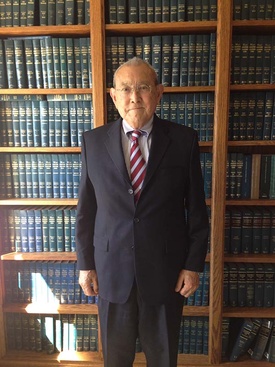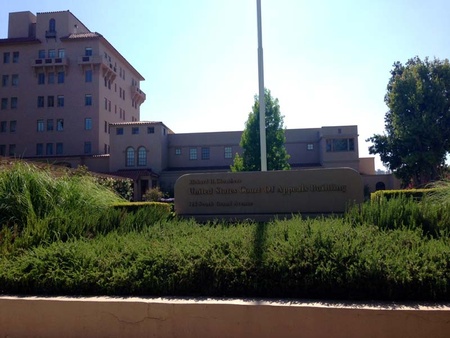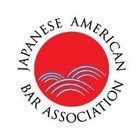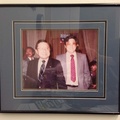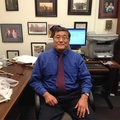Living in the bleak barracks of a WWII concentration camp, the young Judge A. Wallace Tashima could sense “a dark atmosphere [in American society], that there was something sinister about being Japanese.”
Because all persons of Japanese ancestry were branded as “un-American” and “subversive,” Tashima grew up during a time when Japanese Americans like himself could not be conceived as judges.
Yet in becoming the first Japanese American elevated to the U.S. Court of Appeals, Judge Tashima has successfully proven otherwise and now upholds the promises of the Constitution that were once denied to him and the entire Japanese American community.
The Early Years
In June of 1934, Atsushi Wallace Tashima was born in Santa Maria, California to Issei, first-generation immigrants from Japan.
Originally from Wakayama Prefecture, his father immigrated to the United States to attend the University of Utah. Shortly thereafter, his parents settled in Santa Maria, California where his father became the Executive Director of an agricultural co-op.
Yet in 1938, when Tashima was only 4 years old, his father passed away and left behind his wife and four children. Following his father’s death, his mother relocated their family to Los Angeles, where Tashima has lived for the majority of his life.
As a son to an Issei mother, he primarily spoke Japanese during the early years of his life.
“I do know that my mother never became very literate in English,” Tashima recalled. “So I think in pre-school, my first language was Japanese.”
Camp for a Grammar School-Aged Boy
After Executive Order 9066 was signed by President Roosevelt in 1942, Tashima was sent to the Poston War Relocation Center in Poston, Arizona—one of the ten Japanese American concentration camps organized by the War Relocation Authority (WRA).
Reflecting back on his time at Poston, “I think camp would have been a very different experience for me if I had been in high school or if I had been in college… But for a grammar school-aged boy, it was not a bad experience,” Tashima admitted.
Though the WRA facility was bound by barbed wire and constantly surveilled by guards, life in the camps offered him a childhood unique to the countryside of Poston.
“Every weekend, we would go to the Colorado River and go swimming, and it’s something you wouldn’t do if you lived in Los Angeles,” he explained. “I learned how to fish. I learned how to swim… We spent a lot of time outdoors.”
Despite all of the outdoor excitement, Tashima could still detect that “there was something ominous in the background all the time.” And to a certain extent, he began to question the validity of the incarceration policy while still in camp.
“What didn’t make sense was,” he recalled, “the older boys were put into camp, and then when they turned 18, they were drafted into the army. Well, if they are going to go into the army, even then I said to myself, ‘Why do they have to be kept in camps?’”
But it was not until many years later in his life that he unequivocally came to believe that incarceration “was a very shameful and wrongful thing for the country to do.”
Post-war Experience
Following the surrender of Imperial Japan in August of 1945, Tashima and his family were permitted to relocate to the Los Angeles area, where he continued his primary and secondary education.
When he entered his first year of college, Tashima decided to postpone his studies and enlisted in the Marine Corps.
“I was going to college, and I was almost flunking out,” he admitted. “So I decided, ‘Well, I have to do something else.’”
Looking back on his two and half years in the Marine Corps, he remembered, “There was a lot of overt racial animosity…because…most of the white people from the South didn’t want to associate as an equal with blacks.”
But as a Japanese American in the military, Tashima did not recall being a victim of such racial antagonism.
“I don’t think I was given any kind of assignment or duty that was racially motivated,” he affirmed. “In fact, I was encouraged to make it a career.”
College Years
With the help of the GI Bill, Tashima continued his undergraduate studies at the University of California, Los Angeles (UCLA), where he graduated with a diploma in Political Science.
However, “it was getting close to graduation, and I found out that there was nothing you can do with that degree,” he explained.
In search of a career, Tashima considered entering the Foreign Service and even went on to pass the Foreign Service Exam. However, when he was unable to pass the accompanying language exam, he looked towards law school as an alternative.
“I didn’t really know any lawyers or anybody. I just decided, ‘Well, okay, what else am I going to do? I can’t find a job.’ So that’s the reason why I went to law school,” he confessed.
Being One of Four Asian Americans at Harvard
Though he never aspired to become a lawyer, Tashima was accepted into one of the nation’s top law schools, Harvard. And to his surprise, he found himself completely fascinated by the study of law.
“It was the first time I really enjoyed school. I went to law school, and…I was terrific,” he expressed.
However, it was also in law school where he directly experienced the forces of racial discrimination since leaving camp.
When he entered Harvard Law School in 1958, there were only four Asian Americans in a class of 500—making him and his fellow Asian American peers less than 1% of the graduating class.
“There were three Japanese Americans—myself and two boys from Hawaii—and there was one woman who was Korean… So it was quite different in those days,” he revealed.
If hardly any Asian Americans were accepted into law school, then the same could be said for practicing Asian American lawyers.
“There were few, very few Japanese American lawyers,” he said.
For the very few practicing Japanese American lawyers, the opportunity to represent clients outside of their ethnic communities was nearly unheard of.
“Japanese lawyers, all of them, had their offices in Little Tokyo, and all the Chinese lawyers had their office in Chinatown… Their practice was confined to the local ethnic community…because it was still a time of, at least in the business community, very overt racial discrimination,” he stressed.
Likewise, Tashima struggled with the discriminatory hiring practices of that time.
“I remember interviewing for jobs and nobody would hire me—none of the big firms,” he recalled.
In one particular interview, he was told, “Well, we would like to hire you, and your grades are pretty good, but our clients would never stand it… I’m sorry, but I just can’t help you out.”
“So it was quite apparent that the reason was racial discrimination… But in those days, it was okay and quite well-accepted,” he explained.
Working for the California Attorney General
Despite any setbacks, Tashima was offered a job with the Attorney General of the State of California.
“At that time, Stanley Mosk was the Attorney General. Stanley Mosk hired me, and…it was a very, I think, a good public office,” he maintained.
During his time as a Deputy Attorney General, Tashima was eager and sought out every opportunity to hone his skills as a trial attorney.
“I’d do whatever I could to get into court. I did what we call tort defense work, I did government defense work, I did contract work…, [and] I’d probably been to every…county courthouse in California—from San Louis Obispo down south to Imperial County,” he asserted.
Climbing the Ranks of the Professional World
After his time at the Attorney General’s office, Tashima worked in the private sector as an attorney for Amstar Corporation.
Despite the discriminatory hiring practices of the time, Tashima eventually became the Vice President of the corporation. Following his career with Amstar, he practiced anti-trust law at a private law firm for several years.
Speaking to his experience as a Japanese American professional, “I know that it was unusual,” he recalled, “because in a big corporation like Amstar, which was, at that time, a Fortune 500 company, or in a big law firm, there was very few Asian or Japanese Americans or even other minorities around. In many times, I would be in situations that I am the only one there who is not white.”
As one of very few Japanese Americans laywers at the time, Tashima was inevitably undermined on account of his racial background.
In one particular episode, during his time at the law firm, another lawyer named John Austin recommended Tashima to a client on a particular matter.
“So I met with the client, and…on the way out, the client stopped to see John Austin. John came to see me and told me that the client didn’t want me to be his lawyer. He never did say, but…I think it had to be because I was Japanese,” he said.
Yet much to his credit, Austin told the client, “Well, that’s who we are going to have to do this case, so if you don’t want him then we can’t take the matter.”
Though colleagues like Austin would challenge such racially charged behavior, Tashima maintained, “But you see, those kinds of things just happened all the time.”
The Best Seat in the Courtroom
It was during his first year of law school when Tashima first came across the idea of becoming a federal judge.
“When I was a first-year law student, there was a very famous case that was being tried in the U.S. District Court in Boston—the old Scollay Square Courthouse. A group of us decided to go watch the trial…and it was evident to me that the best seat in the court house was the one right up there where the judge was sitting… There was no doubt that he controlled that courtroom, he controlled that trial, and he moved it along,” he recalled.
As he sat in awe of Judge Wyzanski, he said to himself, “Boy, it would be nice to be a federal judge… That’s the job I want.”
Then, when Jimmy Carter was elected to the presidency in 1977, Tashima saw a chance to serve on a U.S. District Court himself.
“I think [Carter was] looking for people [who were], one, young enough to stay on the bench for a while and, two, had a good reputation and commitment as a lawyer and whose outlook was progressive [and] in the spirit of the Democratic Party at the time,” he explained.
His appointment to the U.S. District Court for the Central District of California in 1980 came alongside the unprecedented selection of many other ethnic minorities for the federal bench by President Carter.
“Carter was really the first President who made a big effort to diversify the federal bench,” he asserted. “He appointed, in California, a lot of minorities, blacks, Latinos, Asians, and a lot of women…compared to his predecessors who appointed almost zero…, and it was good to be a part of that.”
The First Japanese American on the U.S. Court of Appeals
After serving 15 years on the U.S. District Court, Tashima was elevated to the U.S Court of Appeals for the Ninth Circuit by President Clinton in 1996.
With his appointment, Tashima earned the title as the first Japanese American and the third Asian American in history to serve on a U.S. Court of Appeals.
“President Clinton, like President Carter…, made something of an affirmative effort to diversify the Court of Appeals, and so I think that was part of the impetus that got me the appointment… I’m not sure if that’s the primary reason or not, but I’m sure that it was a part,” he explained.
To serve as the first Japanese American circuit judge was certainly an incredible feat.
In fact, when Tashima started law school in 1958, he knew only one Japanese American judge, Judge John Aiso of the Los Angeles Superior Court, out of nearly 1,000 judges in the entire state.
“In that sense, I think it’s good that not only myself, but a number of other Japanese Americans are now on the district courts…and a whole bunch in the state courts now,” he said.
Yet beyond the judiciary, Tashima values ethnic diversity in every facet of the government.
“Although we all try to apply the same law, people do bring their personal experiences to whatever work they do… So, I think the government institutions, including the courts, should try to reflect the diversity that America represents today,” he maintained.
The Lessons to be Learned from Incarceration
It has been 70 years since the landmark Korematsu case justified the incarceration of Japanese Americans like Tashima to the barren grounds of concentration camps like Poston. And interestingly enough, Tashima now serves on the same Circuit Court that once handed down the ruling finding Executive Order 9066 to be Constitutional.
Despite what his predecessors had ruled, “I definitely believe that it was wrong—the internment of the Japanese, and I think that conviction does inform my attitude as a judge,” he asserted. “In other words, I think I’m probably much less inclined than a lot of other judges to always trust what the government does.”
While his time in camp has inevitably affected his outlook as a judge, his judicial career has also informed the way he thinks about the incarceration today.
“I think [my legal career] has made my views more firm that it was an injustice,” he explained.
He has also come to see the incarceration as one part of a bigger problem in today’s society.
“I think that the same principles [and the] same notions [that underlay Executive Order 9066] are at play today in a lot of different contexts. I think one of the things we are not doing is paying as much attention to our history as we should to inform the decisions we as a country make today,” he professed.
Leaving Behind His Legacy
Though he has made history in becoming the first Japanese American appointed to the U.S. Court of Appeals, Tashima remains humble and instead entrusts his legacy with the lawyers he has mentored over the years.
“Federal judges have one-year law clerks and so you turn over law clerks every year. Some of them have become judges; a number of them are teaching in law schools; a lot of them are lawyers in private practice and government agencies,” he explained.
“So I think the legacy I leave is probably going to be more in terms of the impact that these law clerks of mine make and the careers that they have many years after I am gone,” he maintained.
Despite his humility, his 34 year-long career as a federal judge of Japanese descent serves as an inspiration and a reminder that judges can, in fact, look like us.
Watch Judge A. Wallace Tashima’s oral history interview on Discover Nikkei >>
© 2014 Sakura Kato


